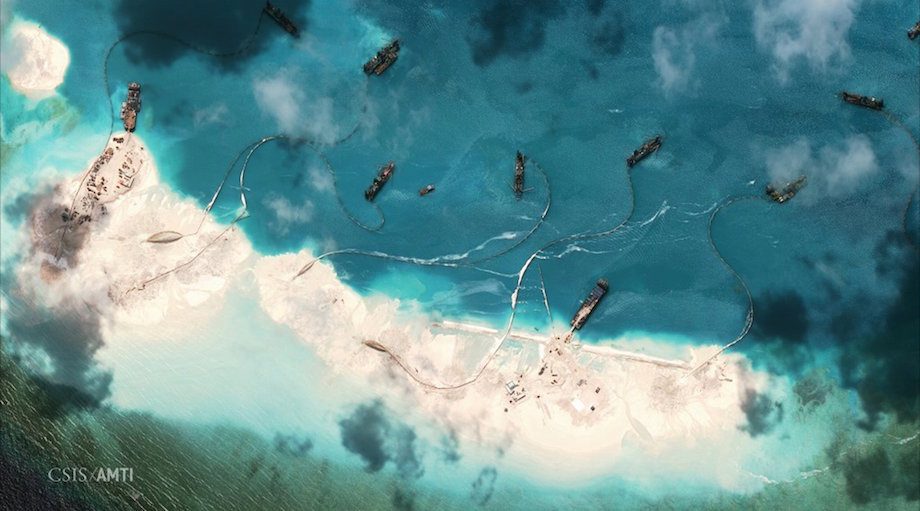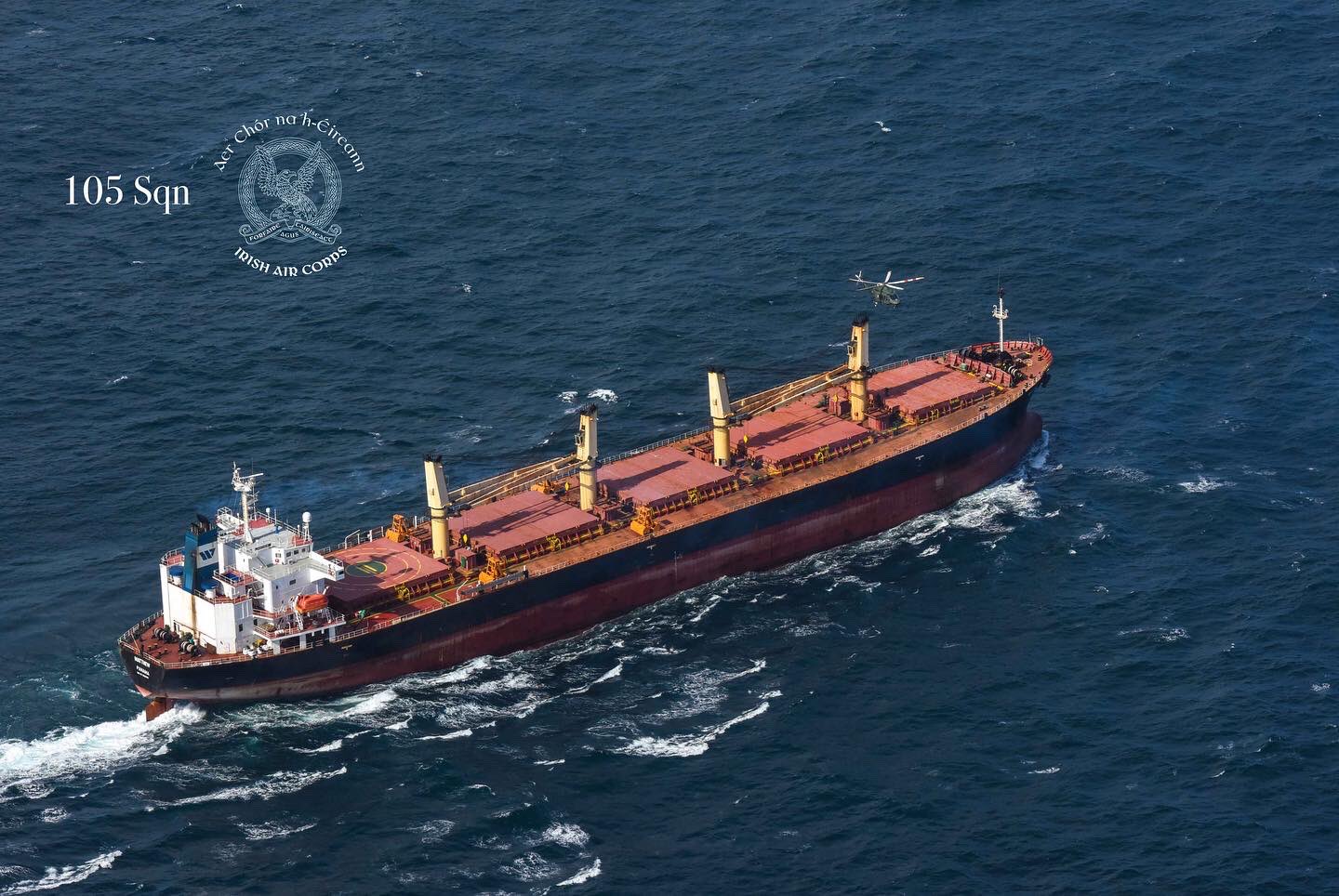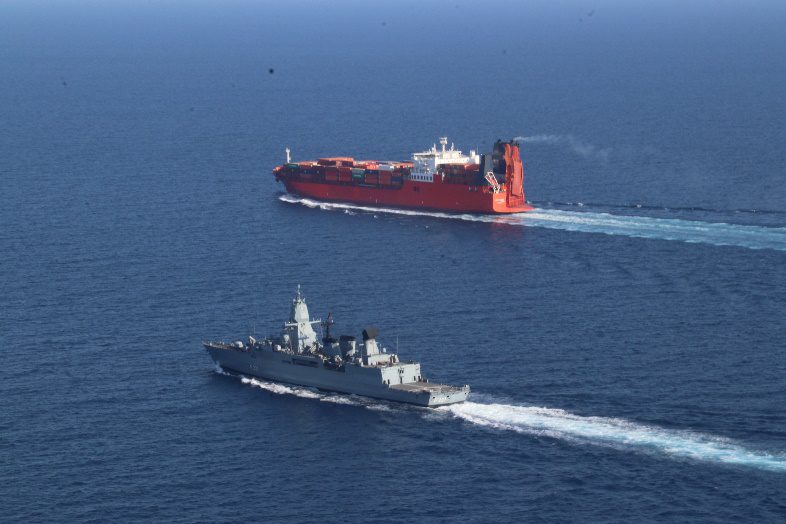Dredgers deposit sand on the northern rim of the Mischief Reef, located 216 km (135 miles) west of the Philippine island of Palawan. REUTERS/CSIS’s Asia Maritime Transparency Initiative/Digital Globe/Handout
By David Tweed
(Bloomberg) — China’s island building program in the South China Sea may result in it gaining control of some of the world’s most important waterways, the U.S.’s most senior military commander for Asia said.
“If this activity continues at pace, is that it — those would give them de facto control” of the maritime territory they claim, Admiral Samuel Locklear, head of the U.S. Pacific Command, told the U.S. Senate. Locklear said China could install long-range detection radars, base warships and warplanes on the islands, potentially giving it the ability to enforce an air defense identification zone.
Satellite photos this month showed images of Chinese dredgers at work at Mischief Reef in the Spratly Islands, a feature also claimed by Vietnam, the Philippines and Taiwan. President Barack Obama said April 10 that the U.S. is concerned that China is using its “muscle and power” to dominate smaller countries in the region.
Locklear said the pace of China’s building program was “astonishing” and added that the islands would improve China’s ability to locate a maritime security force in the waters that would be larger than the combined coast guards of the Southeast Asian countries.
China claims about four-fifths of the South China Sea, home to some of the world’s busiest shipping lanes, under a so-called nine-dash line drawn on a 1940s map. Vietnam, the Philippines, Taiwan, Malaysia and Brunei also claim territory in the waters.
Minimum Defense
China says it has a right to carry out construction work on its sovereign territory in the South China Sea.
“It certainly complicates the security environment,” said Locklear. Efforts by the Association of Southeast Asian Nations to work with China to develop a code of conduct in the South China Sea haven’t “produced very much at all.”
Locklear said the U.S. has reinvigorated its alliance with the Philippines and is looking at helping its government improve its minimum defense.
To help improve security in the region, the U.S. had also developed partnerships with nations that it wouldn’t have considered possible over the past two decades, he said, citing Vietnam, Malaysia and Indonesia.
Locklear said the increasing number and technical sophistication of the submarines in the Indo-Pacific was changing the dynamic of how the U.S. navy operates in the area. He estimated that of the 300 submarines in the world that aren’t U.S. vessels, 200 are in the Indo-Pacific, which he said was the “most militarized part of the world.”
Locklear said Asian nations are building their submarine capabilities because they understand the vessels afford them the ability to deny access to enemies, as well as their value as a deterrent.
Conflict with China isn’t inevitable, he said.
“A China with a military that would come forward as a net provider of security, rather than a net user of security would be beneficial to not only the region, but would be beneficial to us,” he said.
(An earlier version of this story was corrected to clarify that the estimate of 300 submarines is for non-U.S. vessels, not the global total.)
©2015 Bloomberg News

 Join The Club
Join The Club











